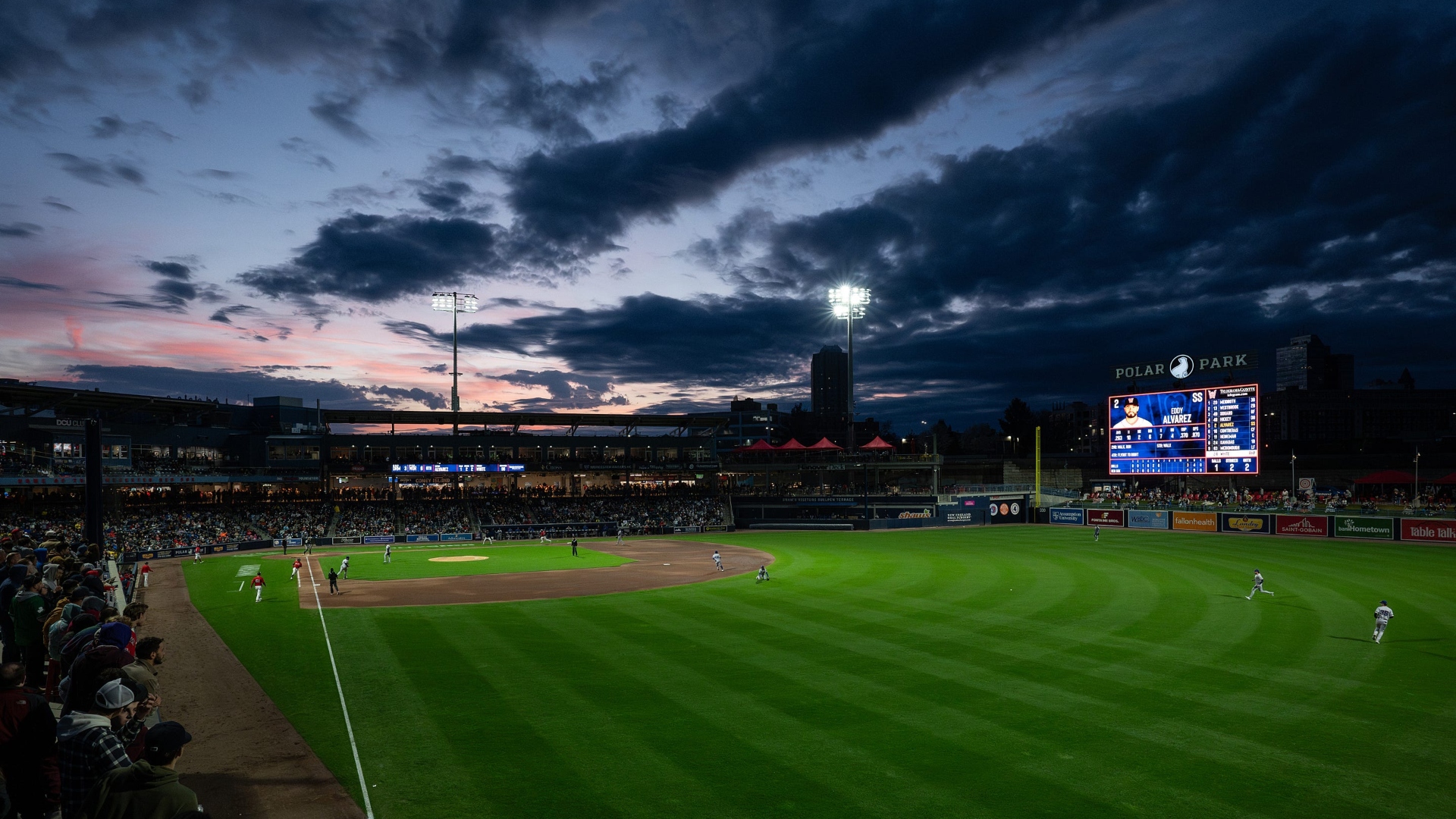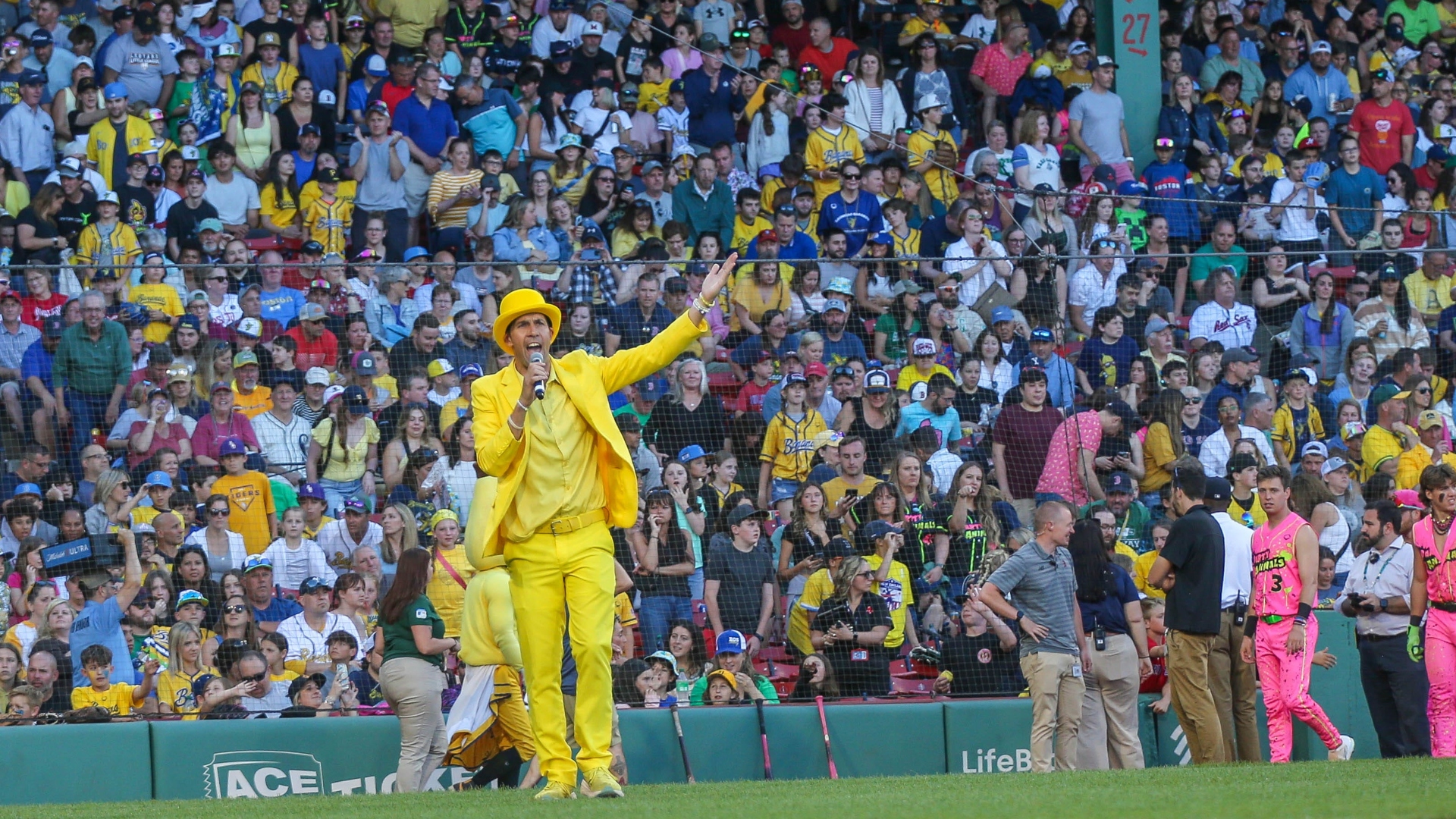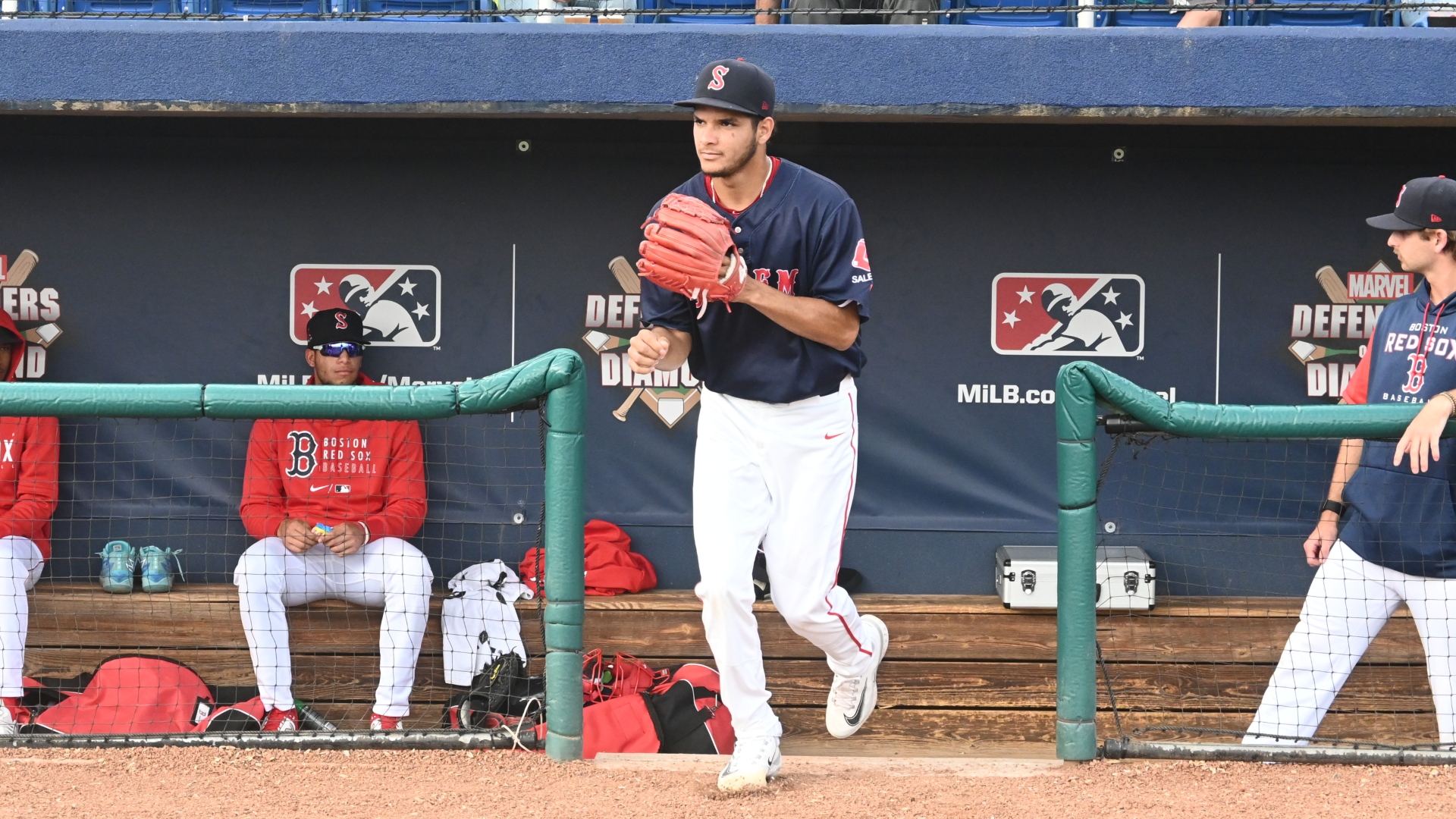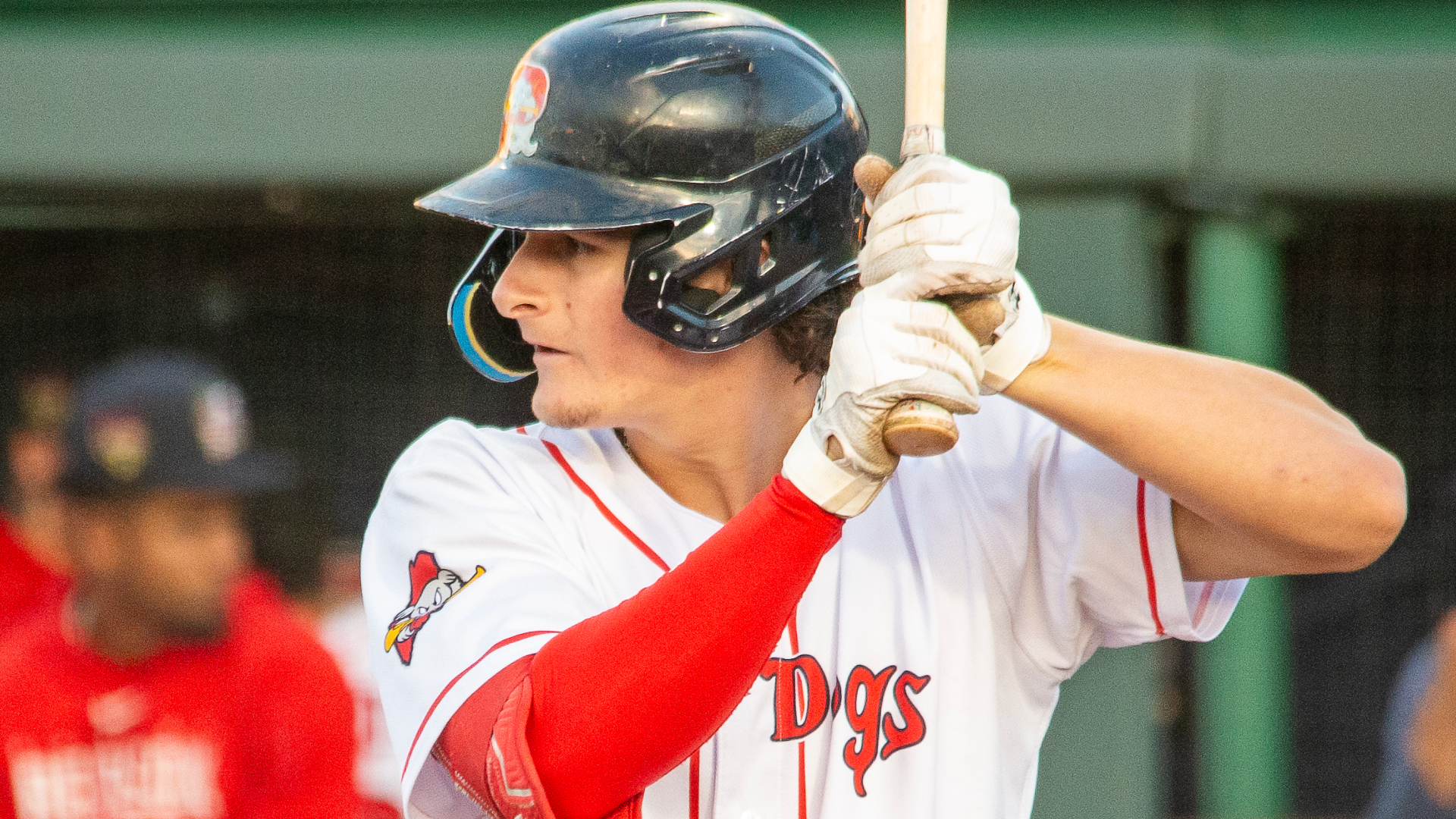Although baseball fans typically spend the offseason analyzing their favorite team's major-league rosters, assessing a team's farm system can offer a better perspective of how well set-up that organization is to succeed not just in 2012, but for the foreseeable future as well.
With several major offseason deals in the books, and with the 2011 draft class now firmly entrenched in each team's system, now is as good a time as any to review how all 30 farm systems stack up heading into the 2012 season.
There's a certain amount of subjectivity that comes with any prospect ranking, as balancing proximity to the majors, upside and probability is a difficult task. But based on scouting reports from Baseball America, ESPN's Keith Law, Minor League Ball's John Sickles and more, plus analysis of both traditional and advanced statistics, here is a series aiming to rank, in reverse order, all 30 farm systems.
It's not a perfect science, but in general, organizations with high-upside prospects rank higher than those without, and prospects who are closer to the majors are worth more than those who are further away. That being said, an organization's depth –- including in the low minors -– does factor in to where they rank.
To begin, the bottom 10 systems in baseball are listed below. For the most part, these systems either lack prominent prospects all together, or contain one or two high-end prospects with little talent to follow.
As always, players must meet MLB rookie eligibility requirements (under 130 at-bats or 50 innings pitched at the major league level) to qualify as part of an organization's farm system.
30. Chicago White Sox
Top Prospect: Nestor Molina, starting pitcher
White Sox GM Kenny Williams should try to win one more time with his current squad of veterans, because judging by the Sox' farm system, it's going to get a whole lot worse for the South Side before it gets any better. Molina projects as a No. 2/3 starter or a closer, and was a solid get from the Blue Jays in the Sergio Santos deal.
Many view Addison Reed as the favorite to close in 2012, and he does have overpowering stuff. Infielder Eduardo Escobar can contribute in the field but can't really hit. 2009 first-rounder Jared Mitchell still has tools, but is progressing very slowly thanks to injuries. There's not much else to see in this system.
29. Miami Marlins
Top Prospect: Christian Yelich, outfielder
It's good that the Marlins spent big in free agency this offseason because there isn't much help coming from the farm. Yelich is the team's only prospect with a shot at seeing his name on a Top 100 list this offseason, and if he can handle center field as he ages, he could be an elite player.
Fellow outfielder Marcell Ozuna is widely regarded as the team's second-best prospect. Third baseman Matt Dominguez has proven that while he's phenomenal defensively, he can't hit. First-rounder Jose Fernandez has No. 2 starter potential, but is several years away, while lefty Chad James is closer to the majors but profiles more as a back-end starter.
28. Cleveland Indians
Top Prospect: Francisco Lindor, shortstop
This system was hammered by graduations and the Ubaldo Jimenez trade last season. Lindor is a potential four-tool shortstop who the Tribe nabbed with the eighth overall pick last June, and is the only elite prospect in the system.
Righty Dillon Howard and second baseman Tony Wolters are decent as well, but both need several more seasons in the minors. Luigi Rodriguez and LeVon Washington are toolsy but unpolished outfielders, and Felix Sterling and Nick Hagadone are just as unrefined on the mound. Cord Phelps looks like he'll be a solid utility infielder with the chance to start for a second division team for few years in his prime.
27. Baltimore Orioles
Top Prospect: Manny Machado, shortstop
Owners of the most top-heavy system in baseball, the Orioles are saved from an even lower ranking by Machado -– a surefire top 10 prospect -– and starter Dylan Bundy, who is likely one of the ten best pitching prospects in the game. Unfortunately for O's fans, Machado likely won't play in the majors until mid-2013, and 2015 is more likely for Bundy.
Second baseman Jonathan Schoop is a solid infielder who may be able to play third as well. Jason Esposito and Nick Delmonico make a pair of recently drafted third base prospects who warrant some attention, but are hardly blue-chippers.
26. Los Angeles Dodgers
Top Prospect: Zach Lee, starting pitcher
Lee is the prize of this system, and brings the same type of athleticism to the mound that makes the Padres' Casey Kelly a top prospect as well. Nathan Eovaldi isn't flashy but is probably ready to be a major-league No. 4 starter right now.
Allen Webster and Chris Withrow have experienced mixed results, but both possess potential as mid-rotation starters. The system is very thin on offensive prospects, with moderately toolsy outfielder Alfredo Silverio likely the best of the group, and catcher Tim Federowicz most likely to see action in 2012. Lefty first-rounder Chris Reed's future is probably in the bullpen, but he'll be given a chance to start first.
25. Detroit Tigers
Top Prospect: Jacob Turner, starting pitcher
Trades, free-agent signings and questionable drafting have drained this system, which is really only four or five prospects deep. Turner is the star, and while he inspires debate as to whether he's more of a future ace or No. 2 starter, no one doubts he's really good.
Third baseman Nick Castellanos is the only position player of note in the Tigers system, and while he'll hit, his power remains a question. Casey Crosby, Andy Oliver and Drew Smyly are three left-handers who could start or relieve, with Crosby possessing the most troubling injury history but also the biggest upside.
24. Cincinnati Reds
Top Prospect: Devin Mesoraco, catcher
Trading for Mat Latos certainly improves the Reds' odds in 2012 and beyond, but it's left their system thin. Mesoraco is the best catching prospect in the minors, and should garner plenty of NL Rookie of the Year votes in 2012. Infielders Zack Cosart and Todd Fraizer figure to see MLB time as well.
Shortstop Billy Hamilton is an exciting prospect and is arguably the fastest player in the minors, but is several seasons away. Right-handers Robert Stephenson and Daniel Corcino won't see the majors for quite some time as well, as each has yet to pitch above Low-A.
23. San Francisco Giants
Top Prospect: Gary Brown, outfielder
Last July's Zack Wheeler-for-Carlos Beltran trade hurt this system, but there are still a few Giants worthy of keeping an eye on. Brown looks like a Gold Glove-caliber center fielder and potential leadoff hitter –- think of him as a better Peter Bourjos. Shortstop Joe Panik has surprised during his brief professional career and his stock is on the rise.
Tommy Joseph, Andrew Susac and Hector Sanchez form a very strong group of catching prospects, though Joseph may move to first base. Eric Surkamp should compete for a spot at the bottom of the big league rotation this season, while Heath Hembree and Josh Osich are notable power arms for the future.
22. Philadelphia Phillies
Top Prospect: Trevor May, starting pitcher
The Phillies don't have any blue-chip prospects now that Domonic Brown has graduated to the big leagues, but they still have some interesting players in their system. May doesn't have the upside of Jesse Biddle or Brody Colvin, but he is the safest bet to be an effect MLB starter.
Sebastian Valle is a solid-if-unspectacular catching prospect, and the same can be said about shortstop Freddy Galvis. Phillipe Aumont and Justin DeFratus could be impact relievers in short order. Larry Greene, a supplemental first-rounder in 2011, possesses enormous power potential and may be able to handle a corner outfield spot.
21. Milwaukee Brewers
Top Prospect: Taylor Jungmann, starting pitcher
The Brewers gutted their system last offseason by trading for Zack Greinke and Shawn Marcum, but they are slowly inching their way back towards respectability. Jungmann and Jed Bradley were 2011 first-round picks, and both are quick-to-the-majors, mid-rotation starters, with Jungmann possessing a bit more upside.
Wily Peralta should see the majors at some point in 2012 and profiles as a solid No. 3 starter, while righty Tyler Thornburg is further away but has a higher ceiling. The Brewers lack dynamic hitting prospects, but outfielder Logan Schafer and infielder Taylor Green could both be second-division starters or good options off the bench.
View all of the MLB farm system rankings: 30-21 I 20-11
Check back on NESN.com on Sunday for farm system rankings 20-11, and check back on Monday for 10-1.
Christian Yelich photo (left) via Flickr/Mark Briscoe
Manny Machado photo (right) via Flickr/pinprosho



